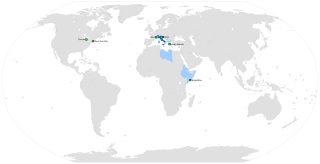
Italian language
Romance language / From Wikipedia, the free encyclopedia
Dear Wikiwand AI, let's keep it short by simply answering these key questions:
Can you list the top facts and stats about Italian language?
Summarize this article for a 10 years old
Italian (italiano [itaˈljaːno] ⓘ or lingua italiana [ˈliŋɡwa itaˈljaːna]) is a Romance language of the Indo-European language family that evolved from the Vulgar Latin of the Roman Empire. Together with Sardinian, Italian is the least divergent language from Latin.[6][7][8][9] Spoken by about 85 million people (2022), Italian is an official language in Italy, San Marino, Switzerland (Ticino and the Grisons), and is the primary language of Vatican City. It has official minority status in Croatia and in some areas of Slovenian Istria.
| Italian | |
|---|---|
| italiano, lingua italiana | |
| Pronunciation | [itaˈljaːno] |
| Native to | Italy, San Marino, Vatican City, Switzerland (Ticino and Italian Grisons), Slovenia (Slovenian Littoral), Croatia (Western Istria) |
| Ethnicity | Italians |
| Speakers | Native: 65 million (2012)[1] L2: 3.1 million[1] Total: 68 million[1] |
Early forms | |
| Dialects |
|
| Latin (Italian alphabet) Italian Braille | |
| Italiano segnato "(Signed Italian)"[2] italiano segnato esatto "(Signed Exact Italian)"[3] | |
| Official status | |
Official language in | 4 countries 2 regions An order and various organisations |
Recognised minority language in | |
| Regulated by | Italian Accademia della Crusca (de facto) |
| Language codes | |
| ISO 639-1 | it |
| ISO 639-2 | ita |
| ISO 639-3 | ita |
| Glottolog | ital1282 |
| Linguasphere | 51-AAA-q |
 Official language
Former co-official language
Presence of Italian-speaking communities | |
| This article contains IPA phonetic symbols. Without proper rendering support, you may see question marks, boxes, or other symbols instead of Unicode characters. For an introductory guide on IPA symbols, see Help:IPA. | |
| This article is part of the series on the |
| Italian language |
|---|
| History |
| Literature and other |
| Grammar |
| Alphabet |
| Phonology |
Italian is also spoken by large immigrant and expatriate communities in the Americas and Australia.[1] Italian is included under the languages covered by the European Charter for Regional or Minority Languages in Bosnia and Herzegovina and in Romania, although Italian is neither a co-official nor a protected language in these countries.[5][10] Some speakers of Italian are native bilinguals of both Italian (either in its standard form or regional varieties) and a local language of Italy, most frequently the language spoken at home in their place of origin.[1]
Italian is a major language in Europe, being one of the official languages of the Organization for Security and Co-operation in Europe and one of the working languages of the Council of Europe. It is the second-most-widely spoken native language in the European Union with 67 million speakers (15% of the EU population) and it is spoken as a second language by 13.4 million EU citizens (3%).[11][12] Including Italian speakers in non-EU European countries (such as Switzerland, Albania and the United Kingdom) and on other continents, the total number of speakers is approximately 85 million.[13] Italian is the main working language of the Holy See, serving as the lingua franca (common language) in the Roman Catholic hierarchy as well as the official language of the Sovereign Military Order of Malta. Italian has a significant use in musical terminology and opera with numerous Italian words referring to music that have become international terms taken into various languages worldwide.[14] Italian was adopted by the state after the Unification of Italy, having previously been a literary language based on Tuscan as spoken mostly by the upper class of Florentine society.[15] Almost all native Italian words end with vowels and has a 7-vowel sound system ('e' and 'o' have mid-low and mid-high sounds). Italian has contrast between short and long consonants and gemination (doubling) of consonants.